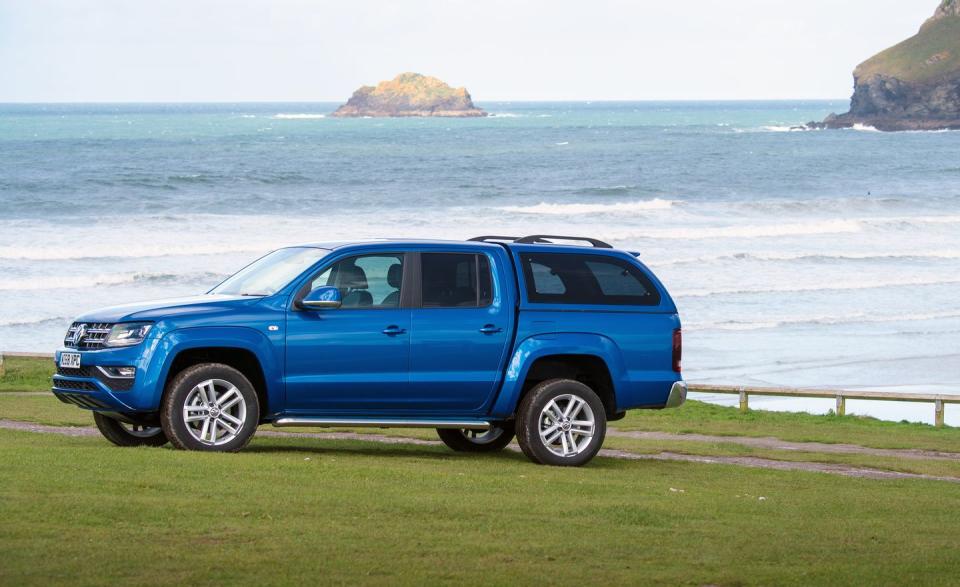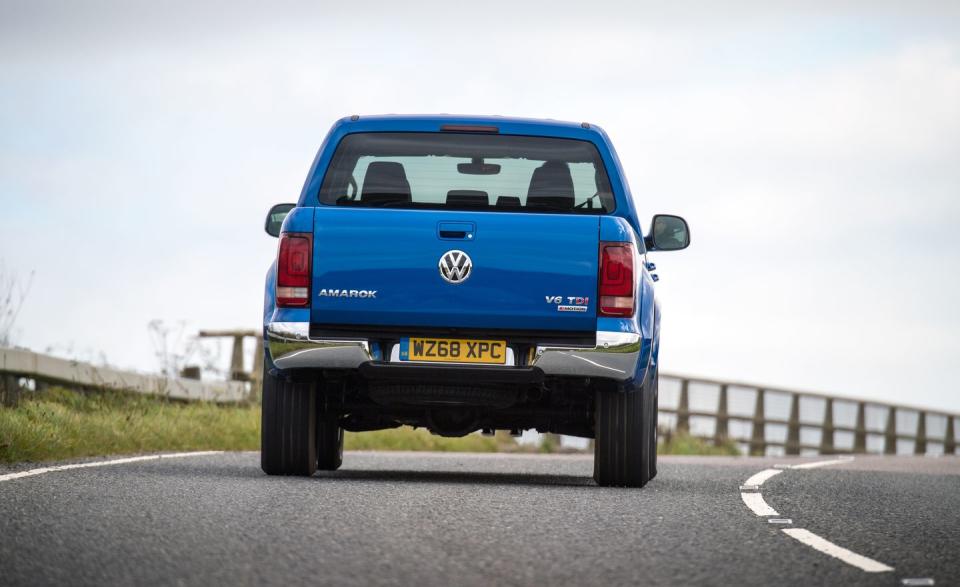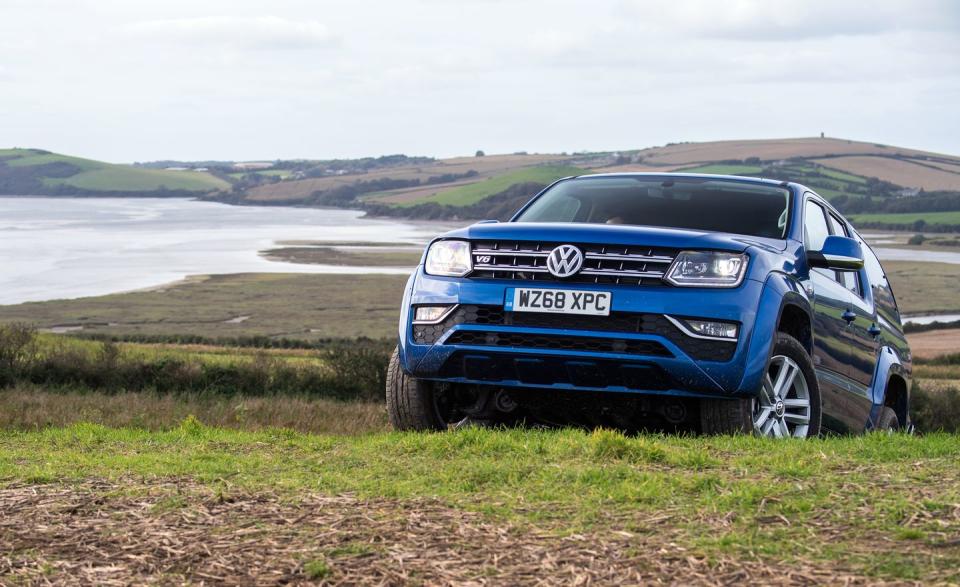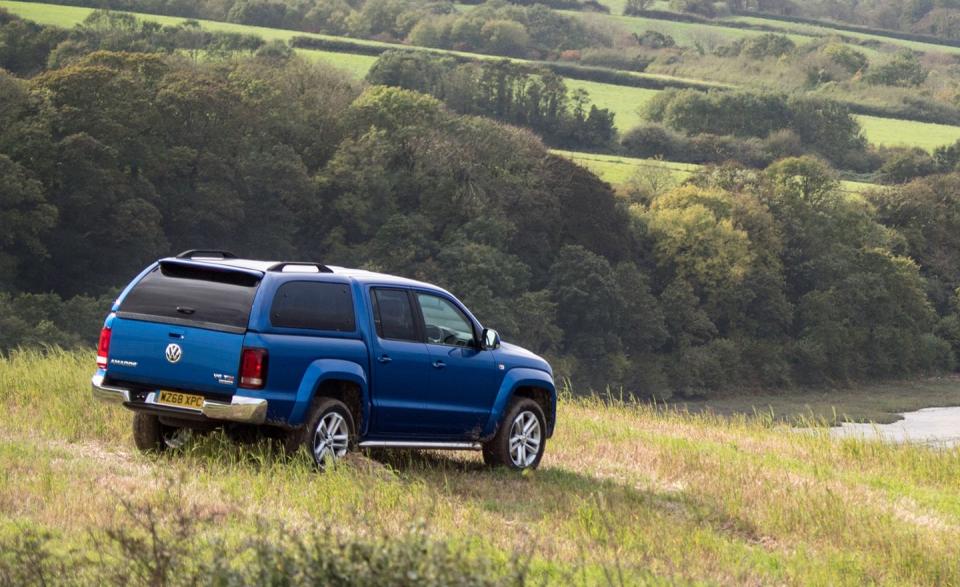The Volkswagen Amarok Is an Enticing Mid-Size Pickup We Don't Get

Volkswagen has made some regrettable decisions in the United States over the last few years. Given a corporate time machine, we're pretty certain we know which one the company would reverse first. But, presuming there was enough plutonium left for a second trip after the diesel emissions cheating had been undone, we reckon that the decision to not bring the Amarok pickup to the U.S. would be next on the list for temporal adjustment.
What's not to like about the idea of a Volkswagen pickup, especially one that looks as sharp as this and which we can report drives with more verve than normal for a mid-sized truck. Although originally designed for South American markets, the Amarok has also found a niche in Europe as an aspirational lifestyle vehicle, one that's a cut above the utility-grade trucks that typify the Continent's modest pickup market. It's an image that Volkswagen has burnished with the launch of more powerful and better-equipped models, switching the range to V-6 diesels in 2016. When we heard that the new Highline model (along with the top-spec Aventura) would get the brawniest engine yet, we had to get our hands on one.

The engine is the once-familiar 3.0-liter turbodiesel found in various TDI-badged Volkswagen and Audi models in the U.S. until you-know-what. In Europe, appropriately cleaned and penitent, it comes with three power outputs: 161 horsepower, 201 ponies, and a 268-hp range-topper. That 268-hp figure, however, is the engine's overboost rating; when not in the 20-second window of increased engine performance, the V-6 makes 254 horsepower. Peak torque is 428 lb-ft, with no restrictions, available from just 1400 rpm.
It might be unfashionable to sing the praises of a Volkswagen diesel, but this remains a great engine. The V-6 feels much more enthusiastic than you'd expect any truck engine to-it was created for brawny passenger cars after all-and responds keenly and willingly, from its grumbling basement all the way to the 4750-rpm redline. It sounds muscular, unmistakably diesely, but with a tuneful note when pressed hard. Emissions are kept clean by, among other things, a selective catalytic reduction that consumes urea from a 3.4-gallon tank.

The 268-hp six has a standard eight-speed automatic, and it shifts crisply and intelligently in both Drive and Sport modes. Manual gear selection is possible only through the gear lever, as shift paddles would have been incongruous even in a truck as glamorous as this. Volkswagen claims a 7.4-second zero-to-62-mph time, which feels entirely feasible given the keenness with which the Amarok steps off the line. We couldn't confirm the stated 127-mph top speed, although given a long enough straight and a Get Out of Jail Free card we'd love to have a crack at it.
Other than the raised ride height and excepting the heaving motions produced by the live-axle and leaf-spring rear end, the Amarok also feels impressively like a Volkswagen, most obviously because of the familiar componentry in the cabin. The steering wheel, instrument dials, and column stalks are borrowed from the previous-generation Golf; the touchscreen navigation interface is equally familiar. And so is the way it drives. The steering is light but precise and delivers more sharply defined responses than we normally expect from a mid-size pickup. The brake and accelerator pedals also deliver unambiguous responses.

Although grip levels are relatively modest, the Amarok stays predictable all the way to the edge of adhesion. Lesser Amaroks get selectable all-wheel drive and an electronically lockable rear differential, but the Highline is fitted with a more technically sophisticated permanent all-wheel-drive system with a Torsen center differential. On slippery surfaces the torque delivery can be felt to be rear-biased, sometimes amusingly so, but the system responds quickly once the rear tires run short on grip. There is an off-road mode, which includes hill-descent control, but the Highline doesn't have a locking rear diff. Ride quality is heavy-footed at low speeds, but the Amarok copes extremely well with rougher surfaces when traveling faster, both unladen and carrying modest loads, using its well-controlled suspension travel to good effect.
Even though European pickups are far more restricted when it comes to towing than their U.S. counterparts (in many EU countries a combined weight of tow vehicle and trailer that exceeds 7700 pounds requires a truck-operator license), the Amarok's payload and tow ratings are competitive with American pickups: The Highline can carry up to 2452 pounds and tow up to 6834 pounds. Depending on equipment, the Amarok weighs between 4700 and 5000 pounds. All European Amaroks are four-door models, and the cargo bed's overall length is just over five feet long at 61.2 inches. The cabin has plenty of dark, durable plastic trim, but it is spacious and feels solidly constructed.
Europe's pickup market is a fascinating parallel universe. The Ford Ranger is the Continent's bestselling light truck, the built-in-Thailand global version that has been adapted for and is just launching in the U.S. Volkswagen has been dropping some broad hints about bringing the next-generation Amarok to the States-most recently with the Atlas-based Tanoak pickup concept. VW has recently signed a deal with Ford for a commercial-vehicle partnership that might help make it happen, the vagaries of tariffs and local production notwithstanding. Fingers crossed, because the Amarok is a fine truck.

('You Might Also Like',)

 Yahoo Autos
Yahoo Autos 